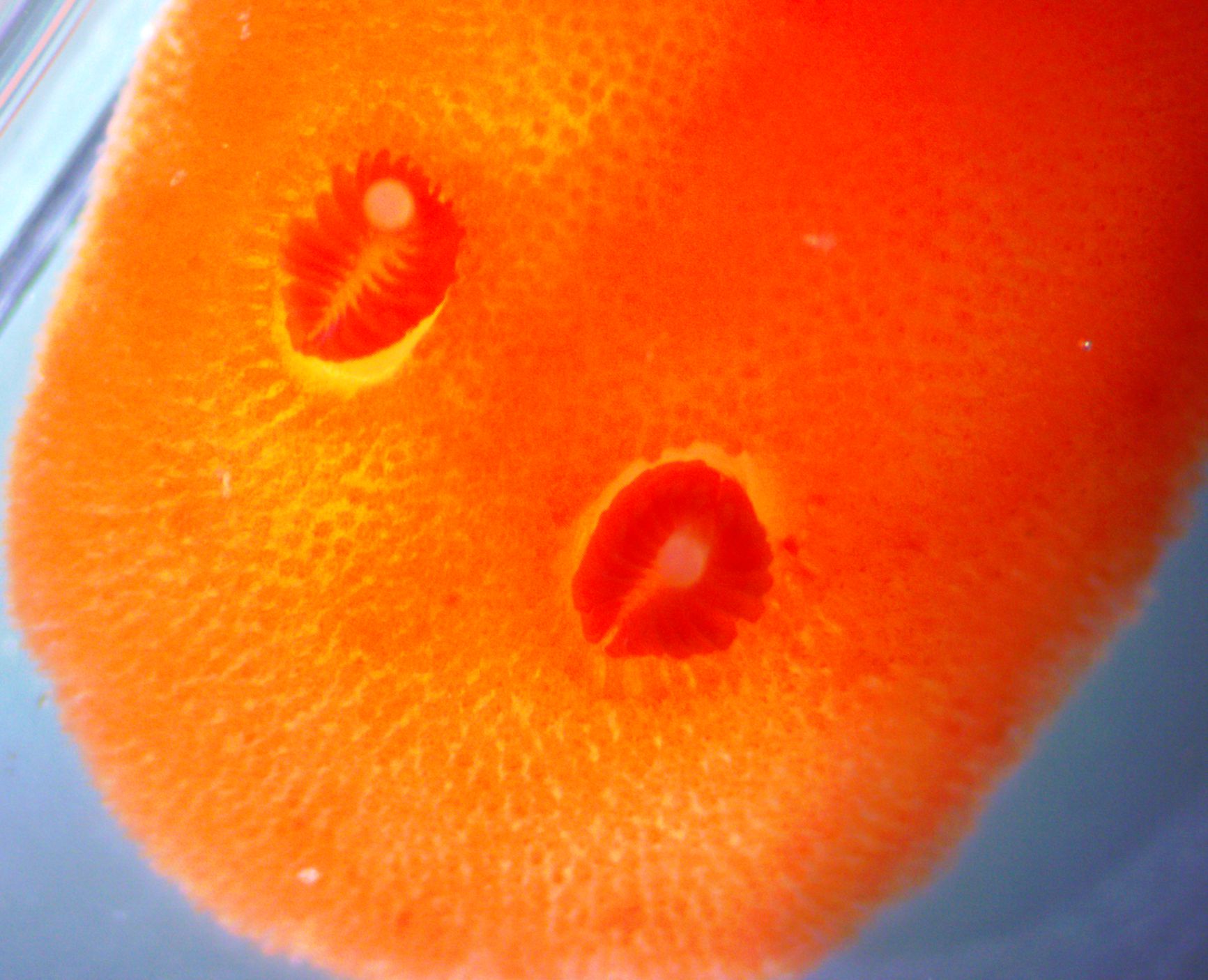Rostanga pulchra MacFarland, 1905Common name(s): Red sponge nudibranch, Red sponge doris, Red nudibranch, Crimson doris |
|
| Synonyms: | 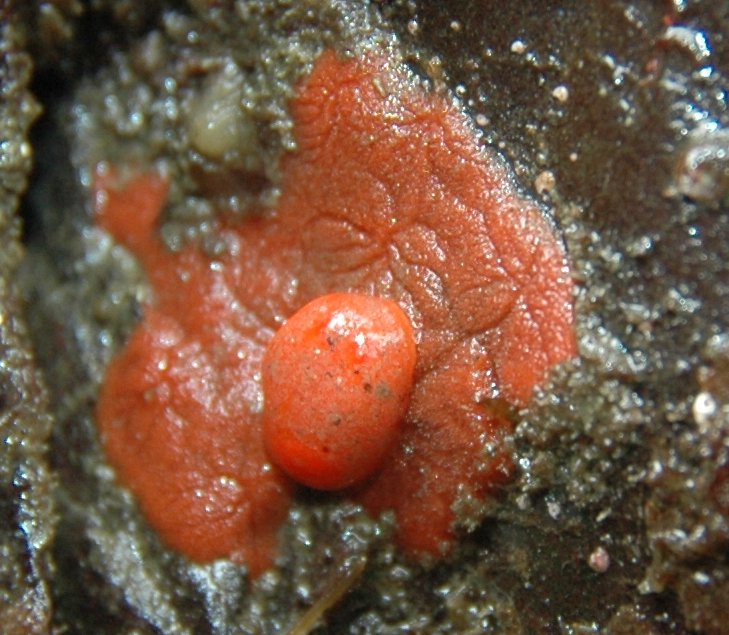 |
|
Phylum Mollusca
Class Gastropoda
Subclass Opisthobranchia
Family Rostangidae
|
|
| Rostanga pulchra, approximately 1 cm long, on a sponge at Swirl Rocks | |
| (Photo by: Dave Cowles July 2005) | |
How to Distinguish from Similar Species: Aldisa sanguinea, which lives from Oregon to Baja California and also feeds and lives on red sponges, has perfoliate rhinophores.
Geographical Range: Point Craven, Alaska to the Gulf of California; Chile, Argentina
Depth Range: Intertidal to 102 m
Habitat: On and around red sponges
Biology/Natural History:
This species
feeds on, and is often found on, red sponges such as Acarnus,Esperiopsis,Ophlitaspongia,
and Plocamia.
It lays
its eggs in a tight orange circle on the sponges March to October (photo).
The larvae are planktonic for 30-45 days, then settle. An
encounter
with at least one prey sponge, Ophlitaspongia
pennata, can induce larvae to settle. It is
believed that
its orange pigment comes from the sponge. Adults can locate
and navigate
to distant Ophlitaspongia
sponges by smell. Some individuals seem to stay quite close
to one
area while others range for distant sponges. Predators may
include
the flatworm Notoplana
acticola.
The cephalaspidean predatory nudibranch Navanax inermis is
repelled by secretions from Rostanga.
| Return to: | |||
| Main Page | Alphabetic Index | Systematic Index | Glossary |
References:
Dichotomous Keys:Flora and Fairbanks, 1966
Kozloff 1987, 1996
Smith and Carlton, 1975
General References:
Behrens,
1991
Bruscaa
nd Brusca, 1978
Harbo,
1999
Hinton,
1987
Johnson
and Snook, 1955
Kozloff,
1993
Morris
et al., 1980
Niesen,
1994
Niesen,
1997
O'Clair
and O'Clair, 1998
Ricketts
et al., 1985
Sept,
1999
Scientific Articles:
Web sites:
General Notes and Observations: Locations, abundances, unusual behaviors:
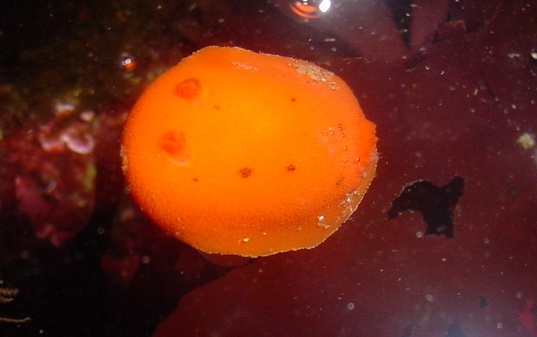
This individual is crawling across red algae in a tidepool.
Photo by Dave Cowles, July 2005
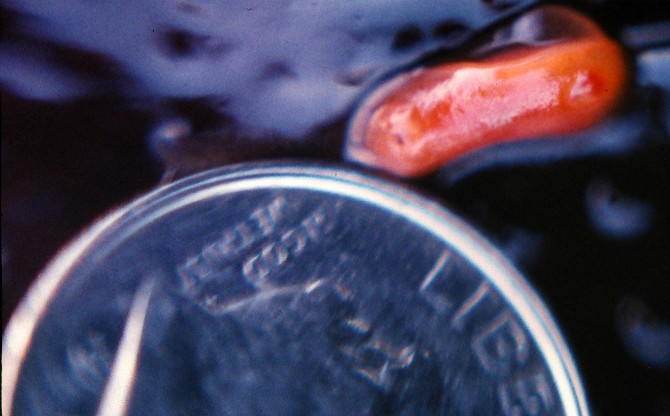
This 1/2 cm specimen was photographed by Dave Cowles at San Simeon, CA
May 2001

This species lays red coils of eggs on the red sponge on which it feeds. Photo by Dave Cowles in a tidepool, July 2012
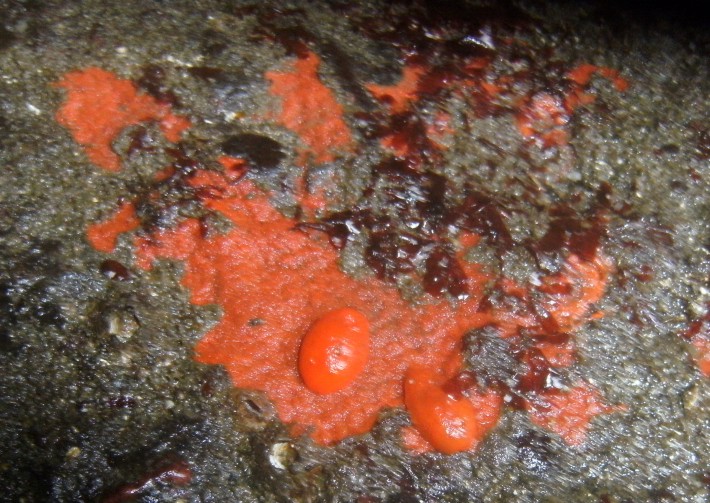
This pair of nudibranchs on a sponge near the one shown above with eggs are probably preparing to mate and lay eggs as well.
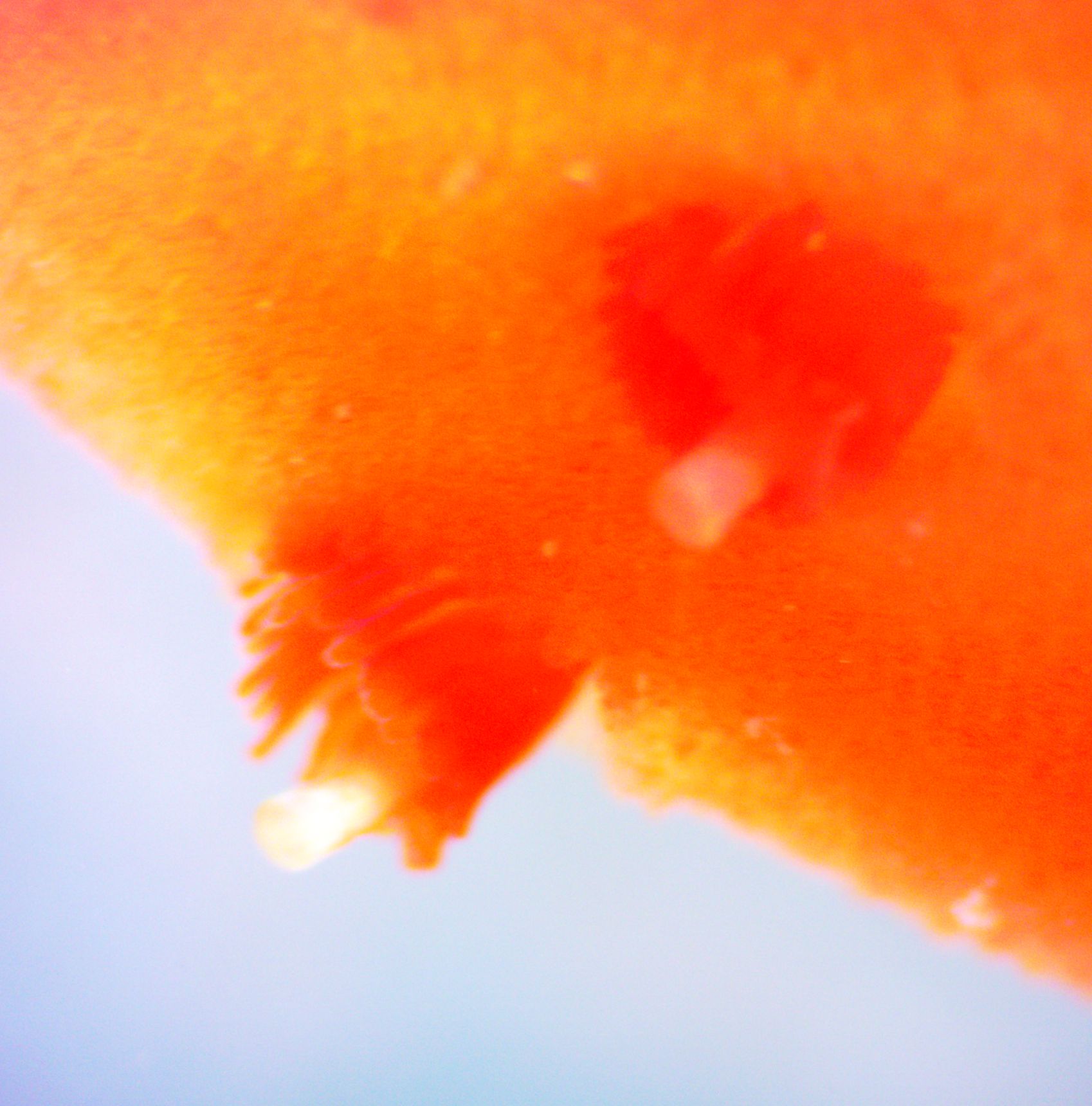
The closeup rhinophore views above and below show the structure of the rhinophores, with vertically oriented leaves terminating in a slender papilla.

Dorsal
(above) and side views (below) of the retractable gills. The gills have
a small piece of debris clinging to them. Animal is 14 mm long.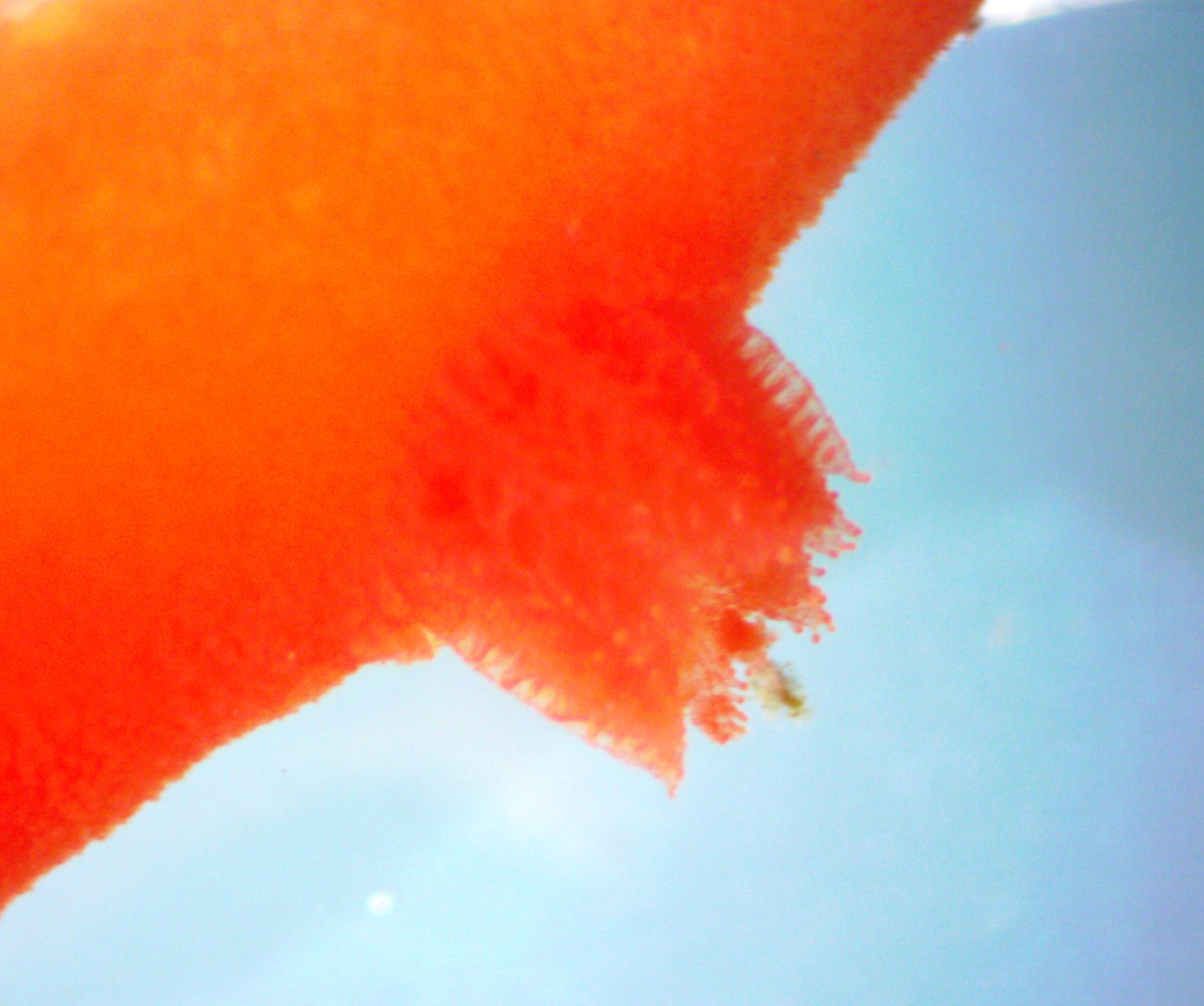
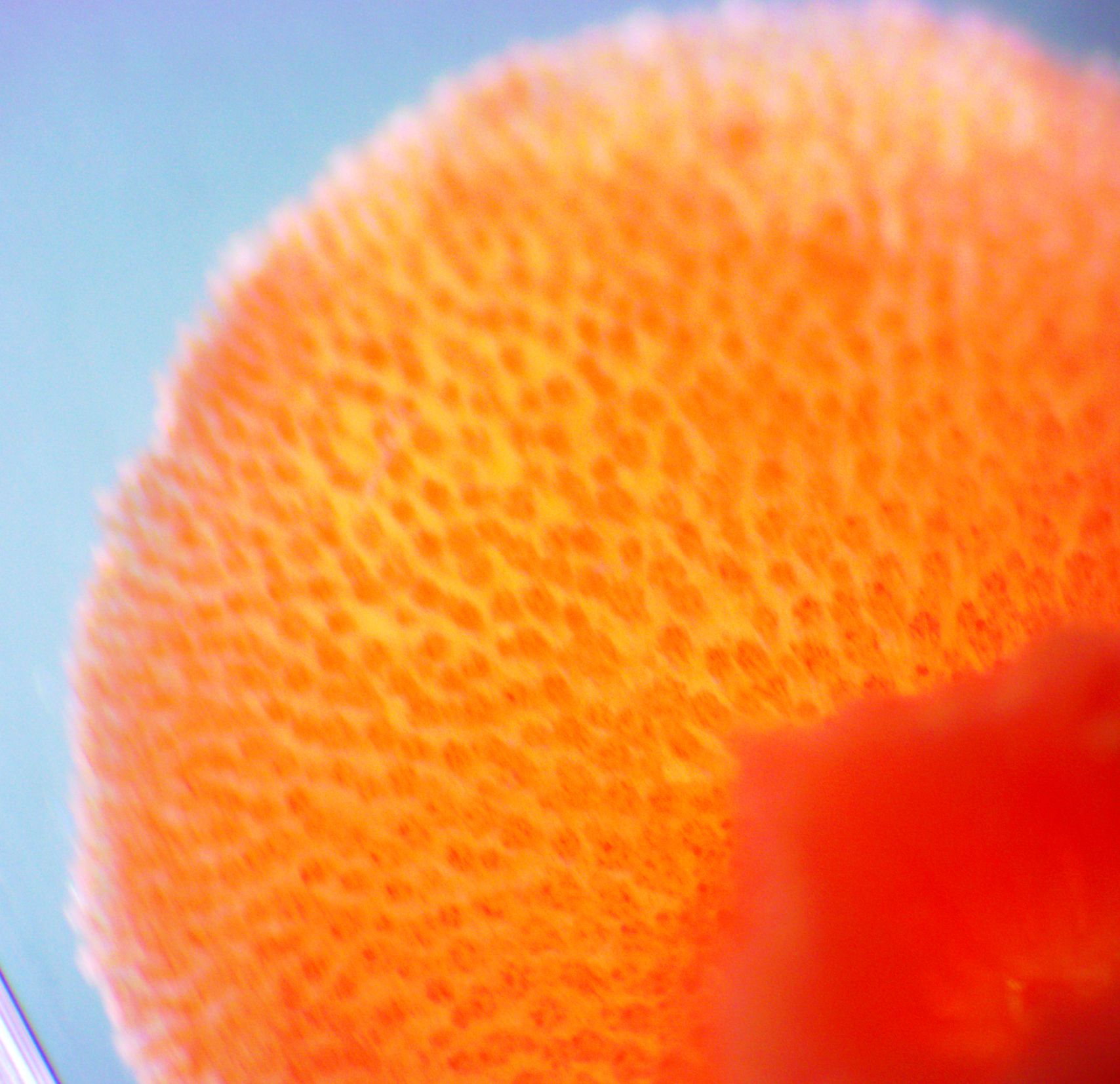
The dorsum is textured by small dorsal tubercles, as is visible in the view of the posterior dorsum behind the gills.
Authors and Editors of Page:
Dave Cowles (2007): Created original page
CSS coding for page developed by Jonathan Cowles (2007)
